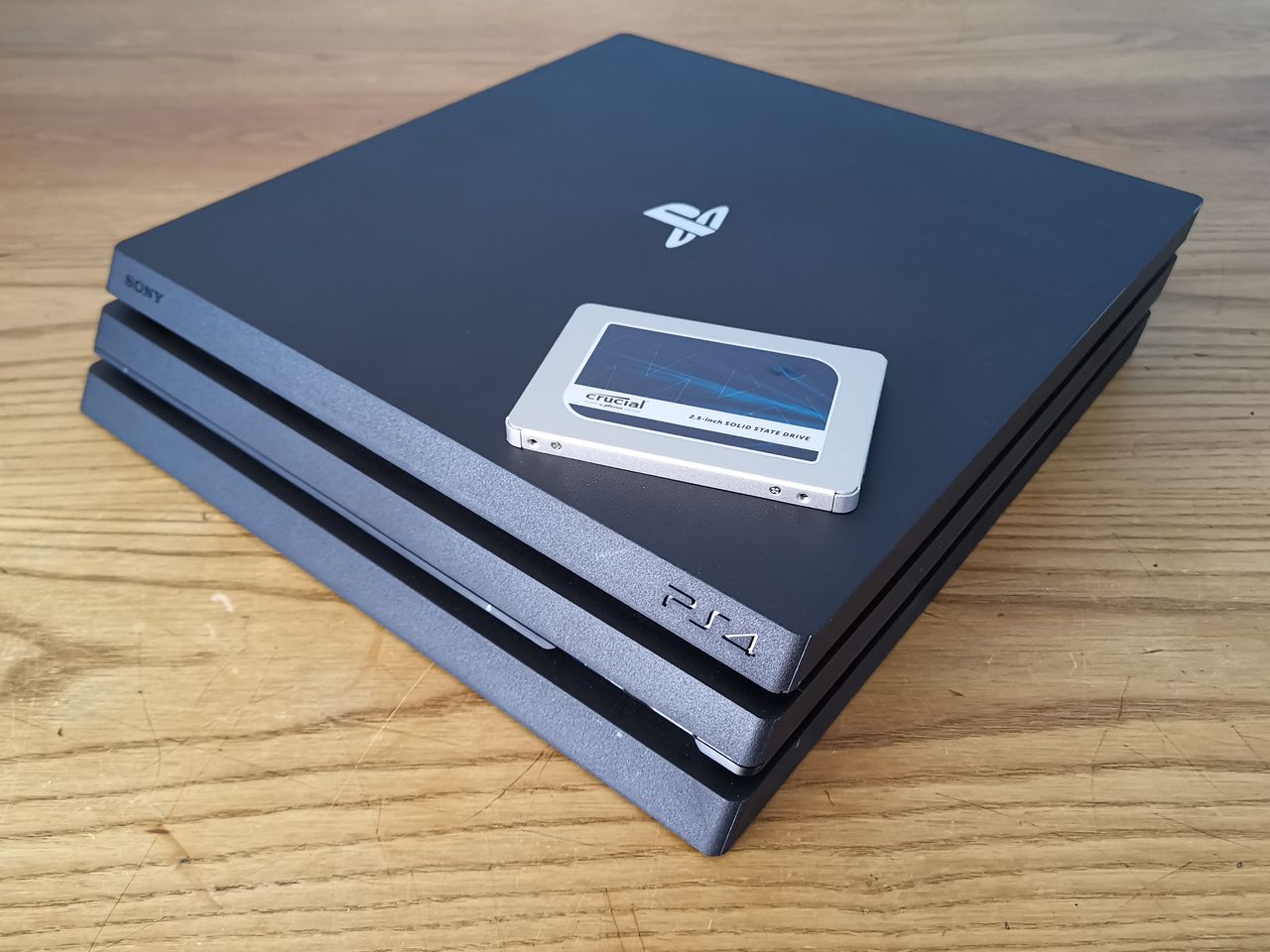

- #SSD DRIVE PS4 UPGRADE#
- #SSD DRIVE PS4 FULL#
- #SSD DRIVE PS4 PRO#
- #SSD DRIVE PS4 SOFTWARE#
- #SSD DRIVE PS4 PC#
So, load times it is, as well as some temperature testing, and also USB copy testing.įor good measure, both the original PS4 and the Pro were tested with their stock hard drives as well as an after-market SSD, to highlight potential improvements when moving away from mechanical storage.Īlright, there’s a lot to cover, so without further ado, let’s get this show on the road. That all said, the aim of this article is to show performance gains that can be enjoyed by the Pro, outside of gaming (as I do not have the capability to monitor that, and we already have an idea of what gaming performance can be like).

What it does make me feel is that the two results could easily be flipped they’re that close – it’s all dependent on what the console decides to do at a particular moment. I’m not talking about gaming performance, but rather load times one test run might be 1 minute, and a second run might be 1 minute 10 seconds. The PS4 platform as a whole just doesn’t deliver the same constant performance. While most often, I can get away with just 2 runs of a benchmark on the PC, some test results here required more than that to help establish what I felt were accurate results, or at least, better averages.īut, here’s the thing: some of the results might not be the best they could be. We can’t control what might happen in the background, so benchmarking one test twice in a row might yield very different results.
#SSD DRIVE PS4 PC#
After all, I benchmark GPUs, CPUs, and other PC components all of the time how hard could it be to benchmark a console? Well, I found out that it is quite hard, only because of the limited control we’re all given over the console. In going into this article, I felt like testing would be a breeze. Now? It’s time to wrap up our coverage with a look at the more technical bits of the PS4 namely, performance in comparison to the original release.
#SSD DRIVE PS4 FULL#
4K, as well as our full review of Sony’s latest console. In some ways, there are no bad options.Over the course of the past week, we’ve posted a look at PS4 Pro launch title support and the debates of 60 vs. Hybrid drives function similarly and can deliver a more noticeable improvement if you play the same games often, and SSDs can provide significant performance and capacity gains if you’ve got the cash. An upgraded hard disk may only deliver a tiny performance boost, but they can provide lashings of space for a low cost.

Happily, it’s worth remembering that a new SSD, hard disk, or hybrid drive will always deliver benefit to your console.
#SSD DRIVE PS4 SOFTWARE#
Also bear in mind that software differences and CPU bottlenecks mean an SSD will always have more raw speed inside a PC or laptop. While an SSD will always deliver a solid boost, it’ll only be able to use its full potential inside a PS4 Pro. The original PS4 has a peak storage transfer rate of 300MB/s, while the PS4 Pro tops out at 600MB/s. An SSD could be better if you want to re-use hardware in the future it’ll be quick enough to function as an external drive on your PS5 or Xbox Series X, or it could be slotted inside a desktop PC.Īlso consider the consoles themselves. If you want to reduce noise levels as much as possible, for instance, an SSD will be best – it has no moving parts, unlike hard disks and hybrid drives.
#SSD DRIVE PS4 UPGRADE#
Price, capacity, and speed are the three main things to think about when thinking about a storage upgrade for your PS4 or PS4 Pro, but there are other areas worth considering. That can make them occasionally tricky to find from mainstream retailers and on the second-hand market. Hybrid drives are still manufactured, but the gap between hard disks and SSDs has narrowed, so there’s been less demand for these drives. Of course, using platter-based hardware means that no SSHD will achieve true SSD speeds, and the SSHD needs to ‘learn’ which files you use frequently – so it takes a little time for its performance boosts to become obvious. Over time, those are the ones that are stored on the flash chips. The reliance on a small amount of flash memory brings the cost down when compared to a full-fat SSD, and an SSHD can still deliver a performance boost when compared to a hard disk – because PCs, laptops and consoles spend lots of time accessing the same files. They use a conventional platter-based system, just like a hard disk, but they’re augmented with a small board of SSD-style flash memory that stores your console’s most frequently-accessed data. Solid-state hybrid drives are a relatively new invention that bridges the gap between conventional hard disks and newer SSDs.


 0 kommentar(er)
0 kommentar(er)
